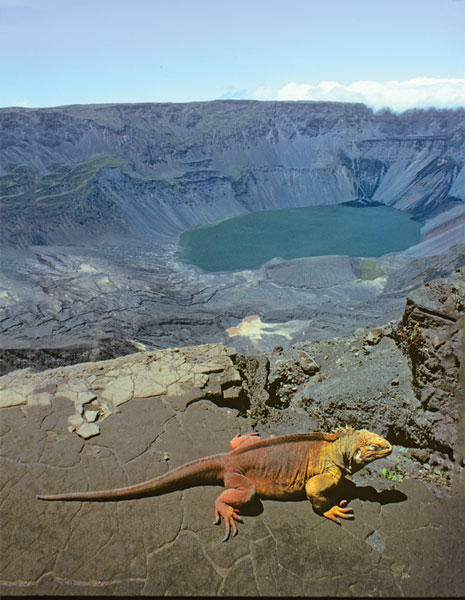GSA Today
Volume 20, Number 10 (October 2010)

About the cover:
Fernandina caldera, Galápagos Islands, seven years after its 1968 collapse, when its floor lowered as much as 350 m. A floor monocline and zone of faults (left) formed during the collapse event, and a preexisting tuff cone (on lake shore) was tilted and lowered 250 m. Galápagos iguanas quickly reestablished habitat on ash on the caldera rim that was deposited by an eruption accompanying the event. Photo copyright and courtesy of Tui De Roy, author-photographer of Galápagos, Islands Lost in Time and Galápagos, Preserving Darwin’s Legacy. See “Caldera collapse: Perspectives from comparing Galápagos volcanoes, nuclear-test sinks, sandbox models, and volcanoes on Mars,” p. 4–10.
© The Geological Society of America, Inc.